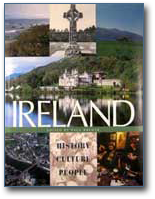Irish Saints
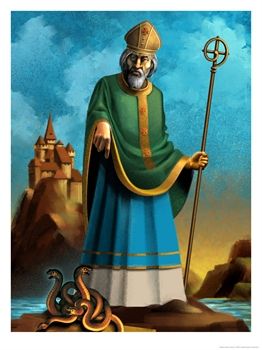 |
Everyone knows about Saint Patrick. He is known as the Patron Saint of Ireland and has been credited with converting the Celtic pagans to Christianity. Although Patrick did not do this totally on his own, he was influential in the conversion of the northern half of Ireland. Traditionally, his mission began in 432 A.D. Saint Patrick's feast-day is celebrated on the anniversary of his death on March 17th.
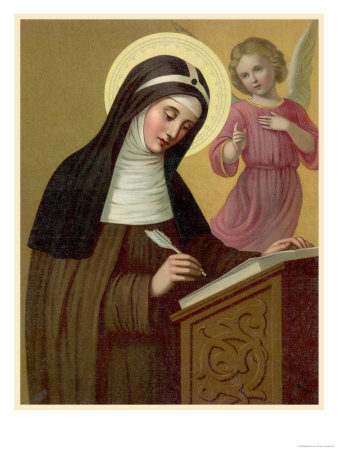 |
Saint Brigid was sometimes known as 'Mary of the Gael'. Brigid was converted by Patrick and dedicated the rest of her life to religion. It is told that Brigid started the first nunnery in Ireland and was the first 'Mother Superior'. Coincidentally, there was a pagan goddess called Bridget in pre-Christian Ireland. Although Brigid is celebrated throughout Ireland, her main following is centered in County Kildare. She is known for crafting a cross with reeds from the River Shannon. Saint Brigid's feast-day is observed on February 1st.
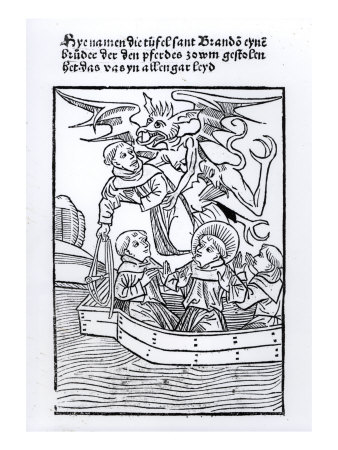 |
Saint Brendan is known as the unofficial leader of the Irish emigrants. It is told that he set out to sea bound for the west. Brendan sailed with a group of associates from his abbey in County Kerry but it is not known if he actually reached the shores of North America. If he did, it would have been prior to Christopher Columbus. Saint Brendan's feast-day is observed on May 16th.
Saint Fiachra was a hermit from 7th century Ireland. Fiachra was granted some land in France by Saint Faro. He lived his life in meditation, particularly avoiding any female companionship. Fiachra soon gained fame as a healer, specializing in venereal diseases, and later was known as the patron saint of gardeners. Fiachra's feast-day is held on September 1st.
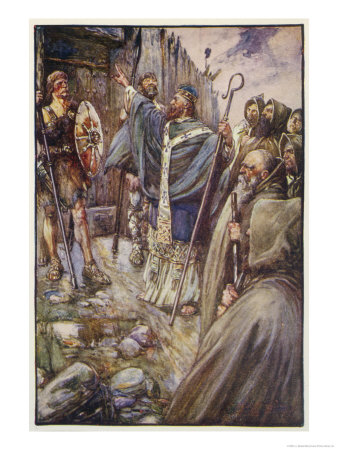 |
Saint Columba, also known as Columcille, is revered in both Ireland and Scotland. He started his career with the church in County Donegal. Columba founded monasteries in Derry, Durrow and, finally, Iona. Glencolumcille in County Donegal is closely associated with Columba but there is a lovely statue of him at Drumcliff in County Sligo. Saint Columba's feast-day is on June 9th.
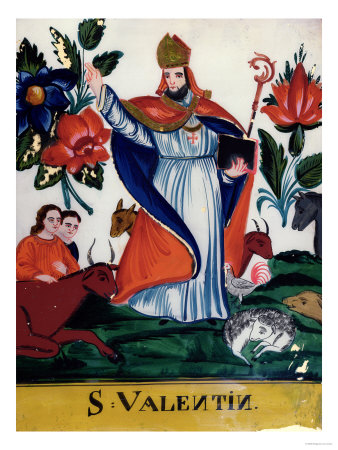 |
Saint Valentine is a bit of a mystery as there is not much known about him. It is not known how he became the patron saint of lovers. Valentine was a member of the Order of the Brothers of Our Lady of Mount Carmel, or the Carmelites. There are relics of Valentine in a shrine at the Whitefriar Street Carmelite Church in Dublin. Saint Valentine's feast-day is celebrated on February 14th.
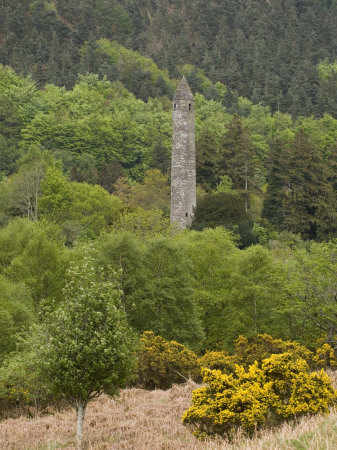 |
Saint Kevin was known to have infinite patience. He would drift into a meditative state in the unlikeliest of locations. There is a story that a bird started to build a nest in Kevin's outstretched hand and he never moved a muscle until the eggs were laid, hatched, and the little birds were old enough to fly away. Kevin is well known for a monastery in Glendalough in County Wicklow. Saint Kevin's feast-day is held on June 3rd.
Saint Laurence O'Toole was born into a family of nobility in the Province of Leinster. He became a monk at Glendalough in County Wicklow, then Archbishop of Dublin. The Anglo-Norman conquest of Ireland occurred during this time and he became a political figure. In 1179, Laurence became the Papal legate (Pope's representative), which angered King Henry II, who banned him from his home country. He died in exile in France. His remains were brought home and are still on display in Dublin's Christ Church Cathedral. Saint Laurence O'Toole's feast-day is observed November 14th.
Saint Oliver Plunkett was born in County Meath in 1625. He went to Rome and was ordained as a priest working directly for the Pope. Twelve years later he became Archbishop of Armagh and went back to Ireland. He became involved in a scam orchestrated by Titus Oates about a plot to kill King Charles II. Even though this was a completely fictional plot, Oliver was convicted as a traitor to the king and was hung, disemboweled and quartered. This explains why his remains are scattered throughout Ireland; his head in Drogheda, and a thighbone in Oldcastle. Saint Oliver Plunkett's feast-day is held on the day of his execution, July 1st, or July 11th in the reformed calendar.
Disclaimer: LittleShamrocks.com is an affiliate website that receives commissions from sales of the products listed. We have purchased and sampled many, but not all, of the products on these pages.
© Copyright LittleShamrocks.com. All Rights Reserved.







